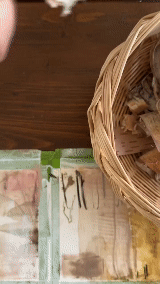Learning by Painting
I paint the same way I live. I play the best hand I’m dealt. It’s a balance between technique and skill and what just happens on the canvas. I love the organic nature of the paint and embrace how the paint wants to behave. The canvas and I have a call-and-response type of relationship. The first explorations of any painting are full of expression and possibility.
Artists often refer to the initial marks as play and try to extend that phase for as long as possible. I keep my starts fresh by sometimes starting with line work and then adding paint and other times starting with paint and adding lines. I might choose a color palette, or I might know the energy of the feeling I’m trying to capture, but I never know what a painting is going to look like. The painting dictates more of what happens than I ever will.
My paintings are a diary of my physical movement. When I’m doing it right, I’m actively listening with my eyes and hands. If I don’t like my marks I have to change how I move. I practice listening on a canvas.
My early marks are driven by curiosity. I can’t wait for the direction of the painting to be revealed to me. I try to avoid falling in love with those early layers and start with bold moves even in a quiet painting. Bold moves give me something to respond to on the canvas. It also makes it easier to refine and resolve more of the painting in the next phase. I can see more of what needs to happen. But it’s slow going.
When my niece and nephews were very young, I visited them and painted several large canvases in a series for their house. I set up my makeshift studio outside and they watched me paint through their living room windows. They made up a little song about what they heard and observed. “Make a mark, then sit down. Make a mark and then sit down.” They taunted and giggled as they sang their little verse at me over and over. I told them I would wreck the paintings if I painted any faster!
Almost without exception, paintings go through an ugly period in the middle of the process. Making marks inherently introduces the risk of “wrecking” the painting, but really that is the challenge of experimentation. Painting myself in and out of corners is exactly what this phase is all about. Pun intended.
Not everything works. But if I stick with it, sometimes magic will strike and the results can truly elevate the work. Over and over, the painting I don’t like in the beginning ends up a favorite in the series. Ugly paintings allow for greater risks and those risks almost always lead to good results. I have to remember this in my life.




